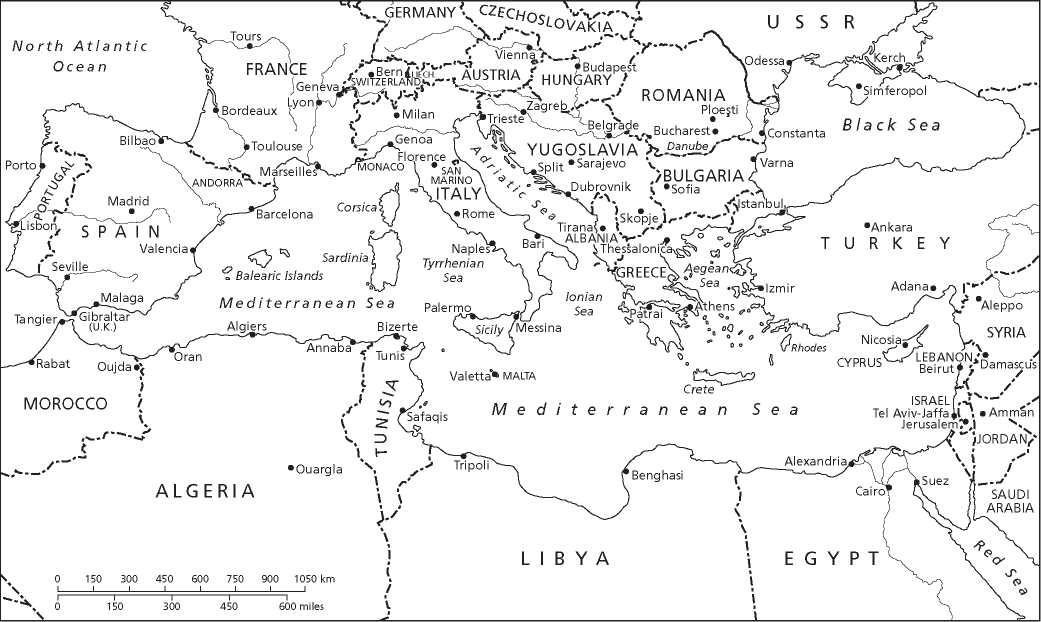ENNIO DI NOLFO
If one takes a long-term view of the Mediterranean region between 1960 and 1975, it is characterized by its transition fTom one defined by the European colonial system and menaced by Soviet encroachment to one that became, fifteen years later, a vital conduit of communication and a channel for shipping Middle Eastern oil into a wider world dominated by the United States. The convergence of Mediterranean history with the global dynamics of the Cold War inspires the consideration of the longue duree. From the early decades of the eighteenth century, the Russian Empire had exerted continuous pressure from the Black Sea toward the Mediterranean. The Soviet Union inherited this geostrategic imperative. The messy decolonization of the Ottoman Empire in the Middle East and the Balkans in the early part of the twentieth century, and subsequently that ofEuropean empires in Northern Africa after World War II, added further complexity to the region. As a result, newly independent Mediterranean states faced the problem ofdeveloping foreign and commercial policies compatible with their own interests while recognizing the influence of often distant naval powers that dominated their coasts. During the period considered here, the global rivalry of the two superpowers - with the United States always being the strongest, with unprecedented capabilities to project its power - gradually imposed itself on complicated regional dynamics with roots going back to the ancient world.
To a certain extent, the Soviet-American confrontation in the Mediterranean began during World War II. Iosif Stalin bitterly resented the exclusion of the Soviets from the Italian armistice negotiations in August 1943, and their de facto exclusion from the Allied Control Commission for Italy (October 1943 to January 1944).330 In April 1945, pro-Soviet Titoist partisans
Occupied Trieste, but Stalin was greatly displeased when American pressure forced them to vacate the city, which the 1947 Peace Treaty with Italy placed under international (i. e., Western) control. Moreover, Moscow tried unsuccessfully to obtain from the United Nations (UN) a trusteeship in either Tripolitania or Cyrenaica (both in present-day Libya). During these negotiations, the Soviet foreign minister, Viacheslav Molotov, complained that "You [the Western powers] do not want to give us even a corner of the Mediterranean." This was neither polemical retort nor improvisation, for the Soviet leadership had long coveted the strategic potential of former Italian Mediterranean colonies.331
Some of the Cold War’s early points of tension were thus located in the Mediterranean basin. Soviet designs were checked by the Truman Doctrine of March 1947, which extended US protection to Greece and Turkey and, in general, warned the Soviets off further attempts at influencing Mediterranean affairs. Subsequently, for several years, the Mediterranean seemed set to return to its imperial past, with France and Britain seeking to reimpose their grip on Africa’s northern littoral.332
Yet, throughout the 1950s, it was evident that the Mediterranean remained a priority of Soviet diplomacy. In March 1959, the Dwight D. Eisenhower administration countered Soviet plans for the region by deploying medium-range Thor and Jupiter missiles aimed at the USSR in Italy and Turkey. 333 In the Kremlin, meanwhile, Nikita Khrushchev had, since 1955, been conceiving a new political offensive against Western domination of the Mediterranean. He wanted to play a direct role in Mediterranean affairs, prepared to increase the Soviet naval presence in the region, and tried to establish close ties with North African and Middle Eastern countries.





 World History
World History









